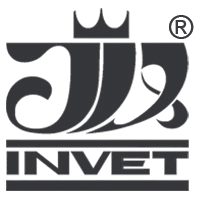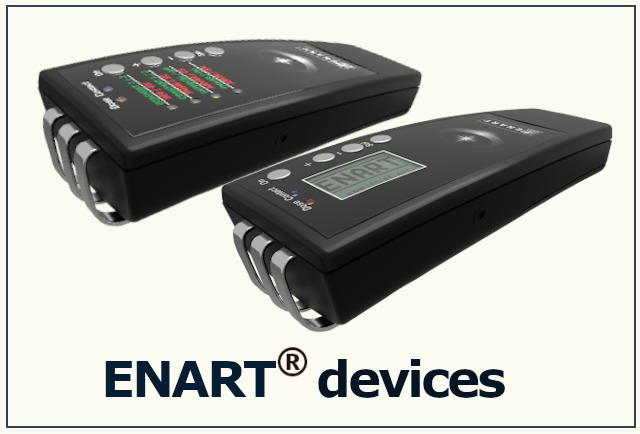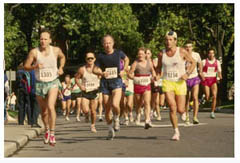
Scenar Sport device – this name Scenar was given after many years of successful usage in Sport and Fitness, because devices have shown themselves to be effective in the treatment of a wide variety of traumas and injuries (emergency conditions) as well as pathological and chronic conditions of the human body.
Modern sport features constantly increasing psychological and physical pressures. Typical examples include the treatment of sports trauma, enhancing physical stability, treatment of general diseases and complete and fast rehabilitation of athletes, as well as the extension of an active sports life.
Portability, low weight and simplicity of application allow the Scenar device to be used not only in hospitals, but at the on-the-spot training sessions, in transport situations and at the hotel. It is well known that the shorter the time interval between trauma, injury or the beginning of a disease and SCENAR therapy, the greater the effectiveness of treatment, resulting in easier passing of the disease and a quicker recovery process. Thus the presence of an SCENAR practitioner at competitions, training sessions or other locations of a sports team can significantly increase the effectiveness of medical help.
One group of SCENAR practitioners has accumulated considerable experience in medical provision, in particular, for competitions at different super-marathon distances. Because of the high dynamic pressure and long duration of these competitions, athletes have to repeatedly resort to massage therapists, use different ointments and extend their relaxation time in relation to increased pressure. All this inevitably leads to a reduction of performance. High numbers of participants usually create problems such as a shortage of massage therapists and a lack of available help for everybody.
Scenar device meets Athletes with chronic pain
In regular over 100km race in Odessa took place 56 athletes from Ukraine, Russia, Moldova, Belarus, Germany and Canada participating. Their ages ranged from 17 to 75 years. The circuit was built parallel to the sea coast, forming an 8km ring. The SCENAR practitioners started to work with participants the day before the competition started. Since most athletes had never heard of SCENAR in Sport, a lecture was given about the capabilities and applications of the device, and an opportunity was offered to try it out. This invoked some interest and many questions. Two athletes, who because of previous traumas were not going to participate in the competition, but had only come to support their team-mates, decided to try the new therapy. One man had a fractured tibia and the other a severe contusion of soft tissues. Their main complaint was intense and chronic pain in their legs.
After 10-15 minutes of Scenar treatment they noticed a significant improvement in their condition and the pain disappeared. They then wanted to participate in the competition along with the others, and one of the athletes actually did so. The obvious results of this first treatment procedure that had been witnessed by everybody, confirmed what had been said on the initial lecture and partly dispelled their doubts. One more lecture was given on the next day, right before the competition started. The offer was repeated and this time was accepted with greater enthusiasm.
Scenar Treatment in Comparison with Traditional Massage Therapy
During the course of the competition SCENAR treatment was provided on the tables used by the massage therapists, working side by side with them. The main complaints (after two hours of running up until the end of the competition) were spasms and blocking of the leg muscles, exhaustion of the ankles, lumbar and sacral parts of the back. Athletes were able to interrupt their run to get this versatile help, but the stop-watch did not stop! SCENAR practitioners were working mostly on the complaint and each successive appeal for help was considered as a new complaint. To relax back muscles and remove exhaustion the Three Pathways (spine and left and right vagal route) were treated, with stress on the lumbar region. Attention to tendons was shown to be effective. Work on the lower extremities was finished off by focusing on two acupuncture points of the foot. The average procedure time was 5-15 minutes, sometimes as little as 2-3 minutes, which was significantly less than the time necessary for massage.
Athletes quickly noticed both a restoration of the working capacity of their muscles and relief from tiredness, allowing them to increase their running tempo. With each new circuit more and more athletes asked for the help of the SCENAR practitioners and fewer and fewer stayed with the massage. The effectiveness and speed of providing help spoke for itself and the fame of this wonderful device grew like a snowball. Good competition results were also achieved. On the day after the event, SCENAR therapy was given to a group of athletes to relieve tiredness. After the treatment everybody got up together and went sightseeing, something that had never happened before!
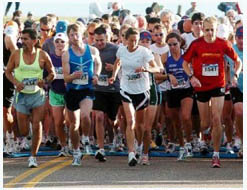
Super-Success of Super Marathon
The Ukrainian Federation of Light Athletes, impressed with the results of the competition and the effectiveness of the new treatment, soon invited the SCENAR practitioners to provide medical help for the Ukrainian super-marathon national team at the competition in Switzerland. One SCENAR practitioner was sent to join the team. He started to work during the journey, giving treatment to team members and their companions for renal colic, angina pectoris, upset stomach, toothache and headache. The treatment was given directly in the bus and, in addition to direct medical benefits, had a significant economic effect due to the avoidance of expensive emergency help in Switzerland. A lot of work was done during that competition, especially taking into account that during free time help was given to everybody who asked for it. Certain difficulties were created by the language barrier, but this was overcome. The Ukrainian national team took first place.
European Athletes Exposed to SCENAR by Scenar practitioners
After further accumulation of experience, a group of SCENAR practitioners decided to support our athletes in the 13th super-marathon. On the 5th of October 1996 in Odessa at the Spartak Stadium, the 1000-mile run was started. On the 14th the participants were joined by 6-day runners and on the 19th the European Cup around-the-clock run started. The competition was attended by the best athletes, record holders and prize-winners of different super-marathon distances from Ukraine, Moldova, Belarus, Latvia, Lithuania, England and Germany.
The work was alleviated by the fact that the event took place entirely in the Stadium. Athletes could watch the work of the SCENAR practitioners and make a decision as to when to have a treatment. Generally each participant received 3-5 procedures per day. They showed good results and commendable responses were received from all those who undertook treatment. The 1000-mile run exhibited some interesting and intriguing elements. For the first two days George Ermolaev was leading the field, an experienced athlete holding the second fastest world result over this distance as well as world records over 1300 and 2700 miles. In the early stages George set the pace for the competition, attempting to beat the existing world record. He refused to use SCENAR support but later regretted it when he had to leave the race prematurely (and then could not avoid the SCENAR Sport session).
The pace of the competition was also supported by an English athlete, Richard Brown, eight time champion of Great Britain, also after a new world record. On the third day of the competition he outstripped Ermolaev and continued to increase the gap between them. He only started to use SCENAR sessions after the fourth day, deterred perhaps on the one hand because of the language barrier and English modesty, but prompted on the other hand by the obvious progress of other athletes who used the treatment. There was a lot of work for the SCENAR practitioners. Already in the third hour of the event a Russian athlete from Istra, V. Glaskov, suffered a deep wound between the 4th and 5th fingers of his left hand following a fall. SCENAR session on both sides of the hand and wrist quickly stopped the bleeding and removed pain, without any bandage. But on the night of the same day Glaskov troubled by an old heel complaint, began to limp and to think about leaving the race. SCENAR therapy 4-5 times a day was suggested, but in fact the first 8-minute session completely killed the pain and inspired confidence in success.
Massage therapy abandoned in favour of SCENAR sessions? New records
On the third day of the competition all the athletes left their massage therapists to be supported only by SCENAR practitioners. All of them gave positive responses, noticing significant lightness of run and less tiredness in comparison with their previous experiences. Benefits included increased tempo of run, reduction of rest time, and significant improvement in the intermediate results.
As a result of the combined efforts of both the athletes and the SCENAR practitioners, records began to quickly fall. English athlete Richard Brown (47 years old) established a world record over a distance of 1100km, then over 700 miles (8 days 9 hrs 23 min 48 sec). His next world record was over 1200km (9 days 1hr 20 min 24sec). But then he had to leave the competition because of stomach ache and upset stomach that started at night, when SCENAR practitioners were not around. An emergency doctor prescribed Richard with pills that evoked severe vomiting and as a result 5 hours were lost. His stomach ache remained until he was able to receive SCENAR sessions.
At the same distance of 1200km the world record was also broken by I. Vasutin (45 years old) and V. Glaskov, who continued to limp a little because of his heel but persisted with his SCENAR Sport sessions.
Scenar technology wins in different sports disciplines
The many days of work experience clearly shows that SCENAR technology can be successfully used in sports medicine as emergency help and as a means to significantly increase potential reserves of the human body. Certainly, it would be better for each sports team to have on its staff an SCENAR practitioner, who would monitor and support the team continuously. Knowing the capacities of SCENAR device, you can look with a different viewpoint on the famous tragic episodes in sports and come to the conclusion that the SCENAR device and technology have a great future in sport, and can help to stimulate a hail of world records in different sports disciplines.
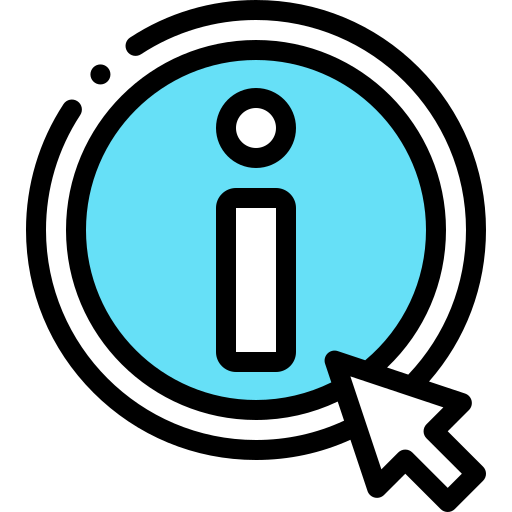 About Us
About Us Contact us
Contact us Delivery and payment
Delivery and payment